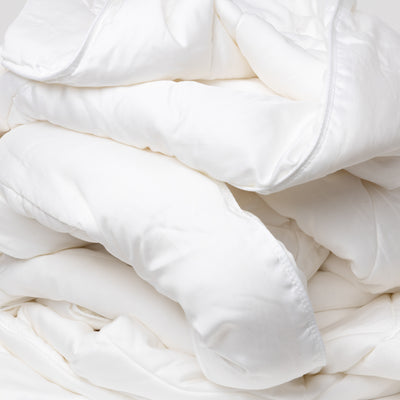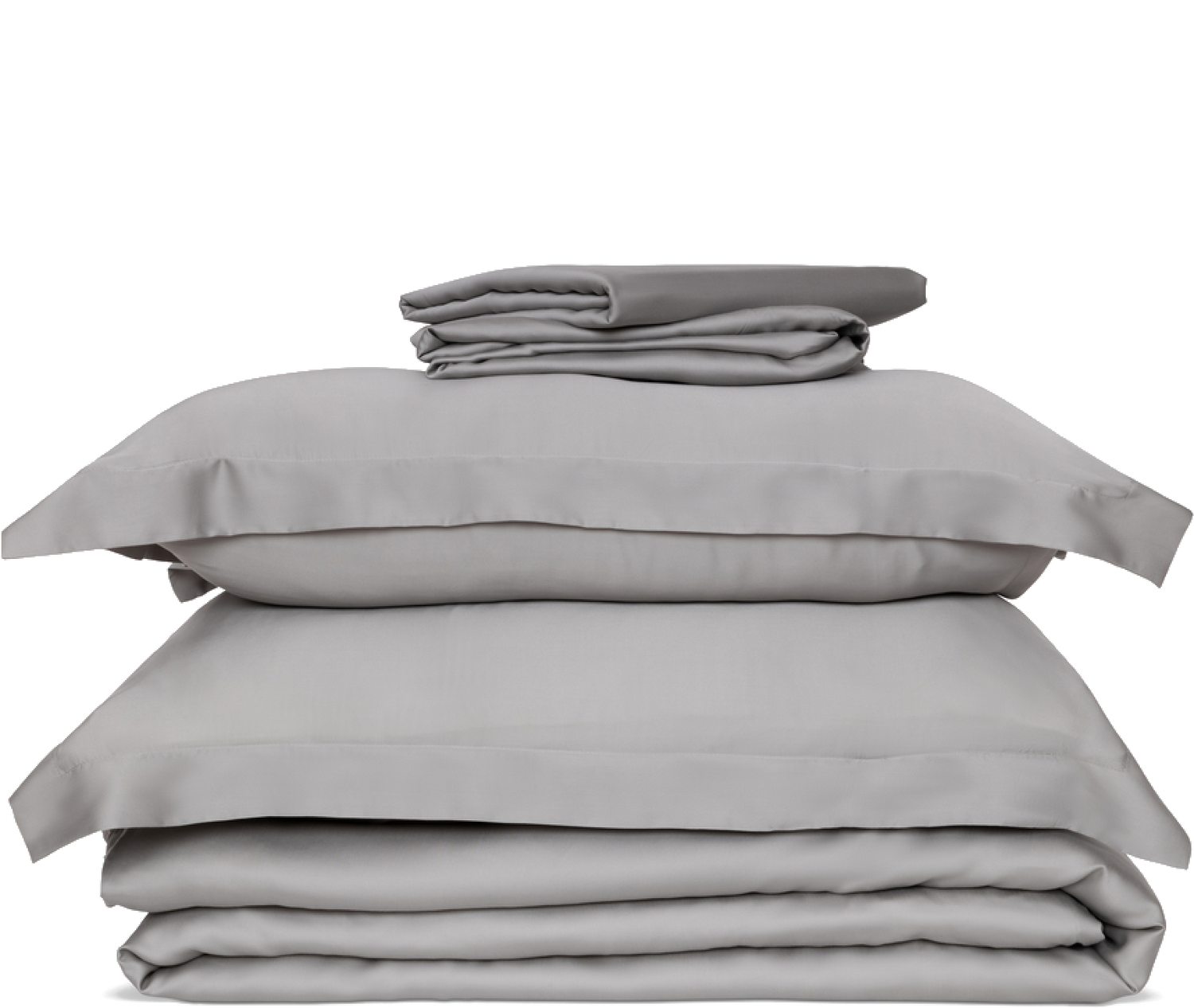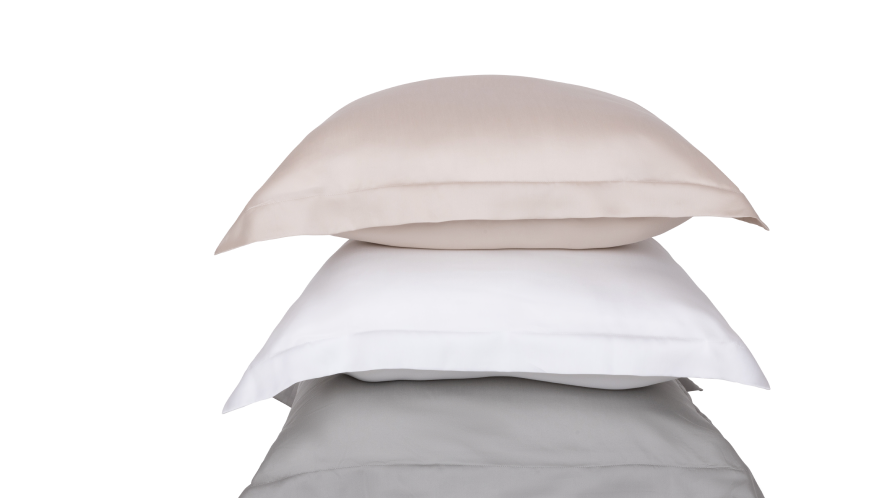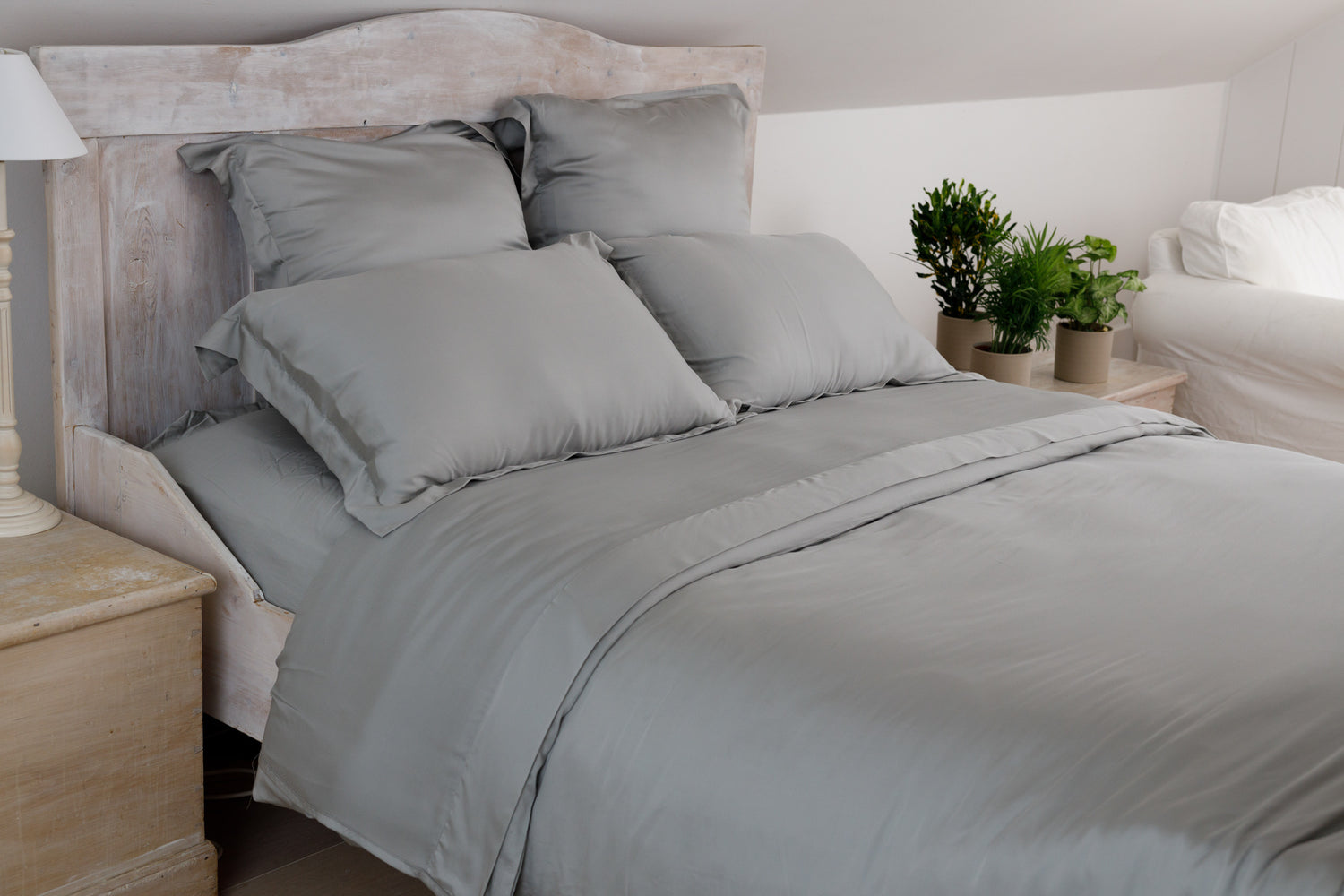Which is the best type of silk for bedding?
Silk is a luxurious and highly sought-after fabric that has been prized for centuries. But did you know that there are different types of silk, each with their own unique characteristics?
In this comprehensive exploration, we'll delve into the various types of silk, their properties, and how to care for them, so you can make informed decisions when purchasing silk products.
An introduction to silk
Ranked among the finest fabrics known to man, silk is sought-after for all sorts of textiles, from clothing to bedding! Originally an exceptionally rare fabric that was traded on the appropriately named ‘Silk Road’, silk has since become relatively accessible – albeit still expensive compared to more common bedding materials like cotton.
What you may not be aware of, though, is the process that’s involved in manufacturing silk bedding and garments.
Unfortunately, it’s not a humane one, with the process requiring as many as 2,500 silk worms to be boiled alive to produce just a pound of silk. Their cocoons are the real prize, with the shell being woven from silk.
The unethical practice has contributed to many people opting for alternative solutions, such as bamboo, Tencel, and Egyptian cotton. But, for many, silk still stands above the rest, thanks to its unrivalled quality and softness.

How many different types of silk are there?
While there are thought to be upwards of thirty different types of silk out there, each used by fashion designers and bedding manufacturers for one thing or another, there are four core variations, each with their own set of benefits and drawbacks: Mulberry, Tussar, Eri, Muga.
Mulberry silk
Traditionally manufactured in China, mulberry silk is one of the most luxurious and high-quality silks in the world. Named after the white leaves of the mulberry tree which forms the exclusive diet of the silk worms, mulberry is luxurious and provides almost-unrivalled softness.
Often regarded as being both smoother and softer than any other authentic silk, as well as being exceptionally strong and durable, mulberry silk is, perhaps unsurprisingly, among the most expensive bedding textiles around.
In addition, because the worms are fed a strict diet of mulberry leaves, the silky strands are long, refined, and uniform – which helps give them their trademark sleek texture.
Tussar silk
Courser than other variations, especially when compared to high quality mulberry, Tussar silk originates in India, and is one of the oldest-recorded types of silk. It’s also one of the most complex to manufacture and relies almost-solely on a relatively small pool of skilled weavers.
Easily identifiable, thanks to its distinctive natural gold colour and uneven texture, Tussar silk isn’t typically used for bedding – instead, it’s mostly found in South Asian clothing and traditional home furnishings.
Eri silk
Eri silk is collected from the cocoons of Samia Cynthia Ricini and Philosamia Ricini silk worms and is widely regarded as being one of the major silk types.
While boasting traditional silk properties, such as being highly durable and temperature regulating, Eri silk has a more-matt finish than mulberry (though, no type of silk is quite as soft as mulberry!).
Predominantly manufactured in India, you may have heard of Eri silk by another name: peace silk. It’s earned this title, due to the harmless and humane method of silk collection; rather than boiling the worms alive in their cocoons, the silk cocoons are boiled once the moth has emerged.
Of course, because the process of acquiring the silk can take longer than other variations, due to having to wait for the moth to emerge, the fabric can be on the expensive side. Couple this with the fact that there are only so many manufacturers who follow this process, and you have yourself a premium textile!
Muga silk
Ranking among the most sought-after types of silk in the world, Muga silk is largely manufactured in North East India. In fact, upwards of 99% of all Muga silk is made in the Indian city of Assam. Featuring a naturally golden hue which is luxurious and striking, Muga silk is commonly used to make products like sarees and other traditional Indian garments.
Interestingly, the silk worm required to make this textile can date its ancestors all the way back to dinosaur times; but, despite their immense longevity and resistance to evolution, the Muga silk worm struggles to adapt and survive in even the smallest state of pollution. Because the worms have to be kept in such a high state of care, Muga silk can be extremely expensive – it was historically reserved for the local royal family!
Eucalyptus silk
Eucalyptus silk is slightly different to the other types of classic silk on our list. It’s a bit of a wildcard in that it’s not actually sourced from the silk worm. However, unlike artificial silk, it is naturally sourced.
Instead, eucalyptus silk is collected from the fast-growing and sustainable eucalyptus tree. That’s not to say it doesn’t hold its own against the real deal, though; in fact, eucalyptus silk shares the very same hypoallergenic, temperature regulating, and skin care benefits, while being ethically manufactured and equally high quality.
The process of turning the wood into soft and cosy silk bedding involves dissolving the fibres into a pulp, which is then fed through extremely fine holes, before being spun into a yarn and woven into anything from clothing to bedding.
In terms of care and maintenance, treat eucalyptus silk as you would the original, and wash on a low, delicate setting – ideally in a mesh bag to prevent snagging. After washing, avoid exposing your eucalyptus bedding to direct heat or sunlight, instead hanging over a washing line or drying rack indoors or in the shade.

Comparison of Silk Types
With so many types of silk to choose from, it can be tricky to come to a decision as to which is best. To give you a helping hand, we’ve outlined where certain types of silk excel…
Cost
If cost is a concern, it’s probably best to steer clear of mulberry, which is not only the most luxurious but also the most expensive type of silk to buy. In fact, products made entirely of mulberry silk are among the most sought after in the world!
In contrast, the most affordable silk is usually Tussar, often due to it not being quite as soft and sleek as other variations. Alternatively, if you have your heart set on mulberry, considering opting for a silk blend (fabric that contains a blend of silk and other fibres).
Sustainability
When it comes to sustainability, traditional silk doesn’t come close to its eucalyptus cousin, which is sourced from the fast-growing and self-regenerative eucalyptus plant. It also boasts the same properties as real silk, without the damage to the worms. A win-win really.
Durability
Silk is generally exceptionally durable no matter the type you buy, making it a cost-effective option over a long period of time. However, once again, mulberry often takes the biscuit as the most long-lasting of the lot – though, that’s not to say the likes of Tussar, Eri, Muga, and eucalyptus can’t hold their own, especially when compared to lesser-quality bedding materials.
The different types of silk blends
A silk blend essentially refers to any fabric that contains natural silk as well as other materials, like cotton, wool, or linen. There are a number of reasons you might opt for a blended textile, including:
- Affordability: because a silk blend contains at least one other material, the fabric doesn’t cost nearly as much to manufacturer, which is passed onto the consumer. As a result, silk blend textiles are much more affordable than 100% silk – especially mulberry.
- Versatility: rather than relying solely on the advantages of silk, manufacturers can take the best of silk and combine it with the strengths of other materials. This creates a versatile fabric that can be used in multiple scenarios. For instance, you can combine the sleek drape of silk with cotton’s softness to deliver delicate and elegant bedding.
- Practicality: because a silk blend is more affordable, and often more versatile, it’s also a great deal more practical than traditional silk. It’s a popular pick for casual clothing, and for those looking for everyday luxury, rather than a statement piece that can cost an arm and a leg!
How to care for silk
It might be long-lasting and durable, but silk is also exceptionally delicate. Because of this, it requires a careful maintenance process to prevent damage. Typically, hand washing with a mild detergent is preferred, but you can machine wash on a gentle cycle.
-
Machine washing your silk
Choose a cold water, delicate spin, and place silk bedding in mesh laundry bags – especially if washing with non-silks. It’s important to also use a gentle detergent, avoiding anything too acidic or alkaline.
2. Drying your silk
Once you’ve washed your silk, you should air dry it – don’t tumble dry! Feel free to hang your silk bedding and garments outside but make certain to avoid sunlight or direct heat.
3. Storing your silk
It’s important to store silk in breathable bags and keep the bags in a cool place away from direct sunlight or intense heat.
What are the best alternatives to silk?
Believe it or not, there are disadvantages of silk bedding, whether it be the cost or unethical manufacturing practice. Fortunately, there are a few solid alternatives for you to consider.
Egyptian cotton
Egyptian cotton is a popular favourite that ranks among the most luxurious bedding fabrics. Not only does its long staple weave give you sleek comfort, but it also gets softer with each wash. A durable, temperature regulating, and breathable fabric, there’s a reason Egyptian cotton has become a go-to bedding solution for many households.
Bamboo
Sourced from the fast-growing and readily available bamboo plant, bamboo bedding is an excellent substitute for silk. It’s eco-friendly, biodegradable, and even soften than Egyptian cotton; combine this with its breathability, temperature regulation, and moisture wicking properties, and it’s no wonder bamboo is becoming increasingly popular.
Eucalyptus
Similar to bamboo, eucalyptus silk is sourced from nature, sourced from the eucalyptus plant. Its superior softness makes eucalyptus favourable for all, including those with sensitive skin, while its hypoallergenic, temperature regulating, and moisture wicking properties help keep your hair and skin healthier.
So, with that final point in mind, you should hopefully feel equipped to choose between the various types of silk – or perhaps one of the more affordable alternatives! If you’re feeling inspired, check out our full collection of silk bedding favourites, or discover even more insight from our sleep experts over on the Ethical Bedding blog.
Any other eco-friendly home tips?
Ethical Bedding was named an expert in a Rent article. Check out the featured article here: Eco-Friendly Home Living Tips for Better Sleep and Daily Energy | Rent.
















